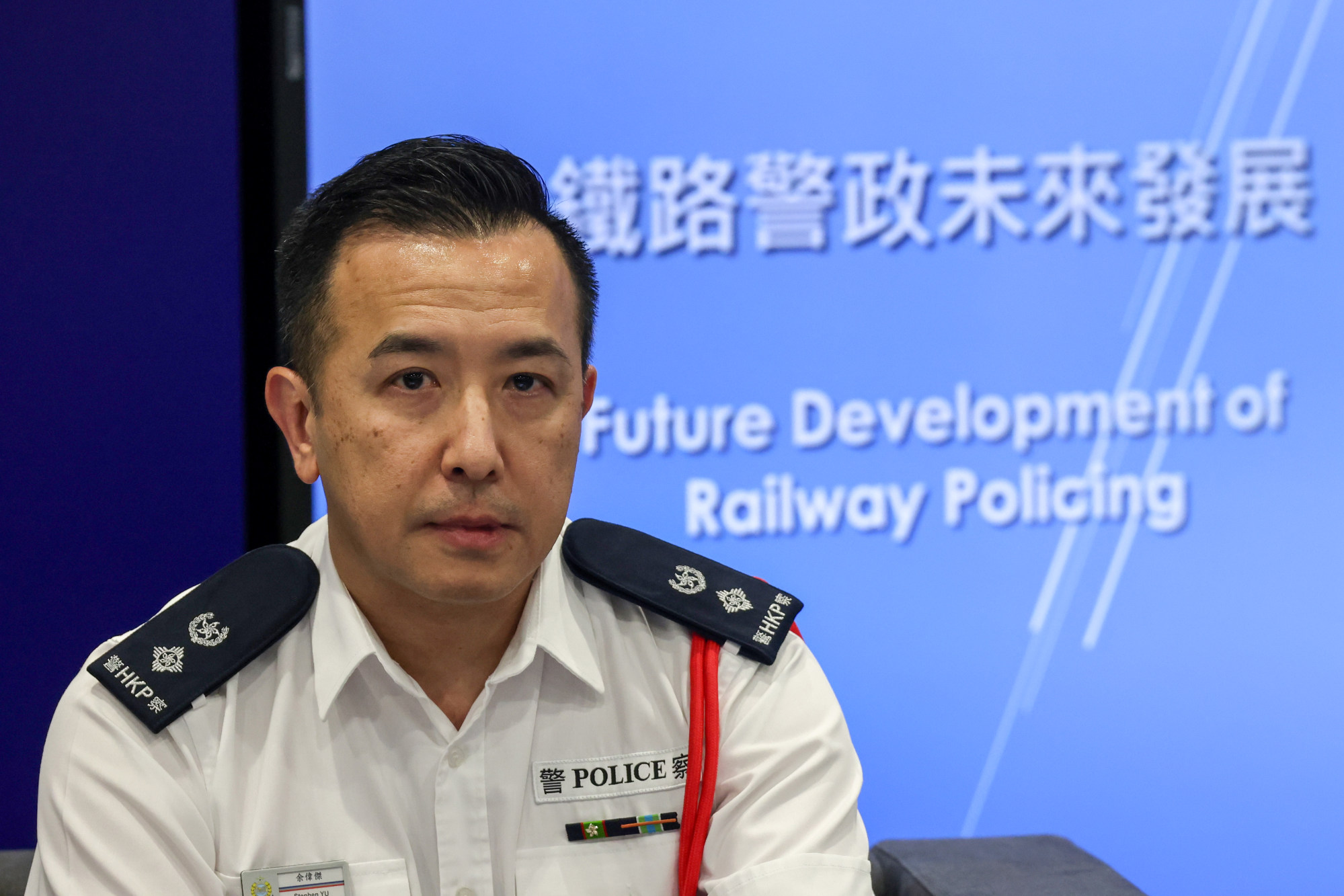Hong Kong police will revamp their strategy for responding to emergencies in railway stations, as the network’s rapid expansion has made it inefficient for officers to continue with the current practice of taking trains to crime scenes.
Stephen Yu Wai-kit, commander of the force’s railway district, said on Wednesday that the tenfold expansion of the MTR network in past decades had made law enforcement in stations and on trains challenging.
“If we keep using the model from the past 40 years to police an ever-expanding network with one police district, relying on MTR trains as transport, our officers’ speed and efficiency will be affected if they face disruptions when heading to [crime] sites,” Yu said.
When the MTR Corporation opened the Kwun Tong line with nine stations in 1979, police set up a special unit to patrol and handle crimes on the railway, with officers using trains as transport.
Following the network’s expansion over the years, 98 stations now dot the city, while the railway unit has more than 300 officers.
Under the planned revamp, officers from the railway district will no longer stay underground full-time from June as the force will integrate railway patrols and ground patrols of each respective police district.

Chief Superintendent Pierre Wong Chi-wing of the force’s operations wing said the reshuffle served to boost law enforcement efficiency, rather than being a result of manpower shortage concerns.
“We are deploying staff from the railway district to different police districts. This will not cause any increase or decrease in our overall manpower,” Wong said.
This means officers, including from the Emergency Unit and Police Tactical Unit, and those who patrol the streets will also cover MTR stations and trains.
While Wong conceded there might be difficulties when incidents took place between stations in different districts, he said the force would have a clear command chain to assign appropriate personnel to follow up.
Yu said officers would not ask passengers to return to the station where an incident first happened.
“It would be far easier for [police officers on ground level] to go down to the railway system and respond professionally, timely and promptly. That’s what we want to achieve,” Yu said.
While patrol duties would be shifted to each district’s police units, around 30 staff from the railway district would continue with policy formulation work. The force’s operations wing will supervise this batch of officers.
The Railway Response Team, an elite counterterrorism squad under the railway district, will be absorbed by the force’s Counter Terrorism Response Unit.
Yu said these two units had been working together since November 2022, in a pilot scheme to boost counterterrorism patrols in the city.
The district commander said the number of railway patrols had increased by 30 per cent under the scheme, boosting the force’s counterterrorism capacity in the process.
Wong pledged that existing policing infrastructure, including seven police posts across the network, would continue to operate after the reshuffle.


